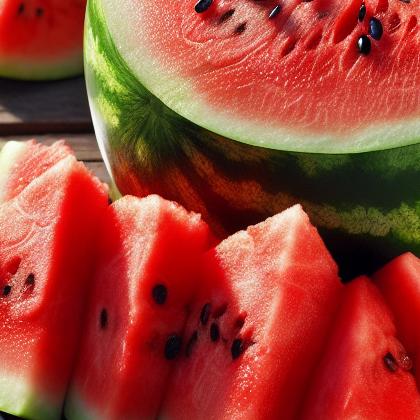Showing results for 'Watermelon'
close
Watermelon

Watermelon (Citrullus lanatus var. lanatus, family Cucurbitaceae) is a vine-like (scrambler and trailer) flowering plant originally from southern Africa. Its fruit, which is also called watermelon, is a special kind referred to by botanists as a pepo, a berry which has a thick rind (exocarp) and fleshy center (mesocarp and endocarp). Pepos are derived from an inferior ovary, and are characteristic of the Cucurbitaceae. The watermelon fruit, loosely considered a type of melon – although not in the genus Cucumis – has a smooth exterior rind (usually green with dark green stripes or yellow spots) and a juicy, sweet interior flesh (usually deep red to pink, but sometimes orange, yellow, or white).
Watermelon Pairs With:
Food Item
Flavor Affinity Level

Did you know there are 77 food flavor pairings in my database for Watermelon available. What you are seeing above is a random list of 30 items which pair with Watermelon.
For the entire list, beautifully formatted, enter your email address and click the download button below, then I'll email it to you as a PDF.
Watermelon Properties:
| Food Property | Type | Description |
|---|---|---|
| Flavor Profile | Sweet | Watermelon is known for its natural sweetness, making it a popular choice for refreshing summer snacks. |
| Astringency | Watermelon does not have any astringent qualities, as it is primarily known for its juicy and hydrating properties. | |
| Texture | Moisture | Watermelon is incredibly high in water content, giving it a juicy and refreshing texture. |
| Color | Natural Pigments | Watermelon is known for its vibrant red and green colors, which come from natural pigments like lycopene and chlorophyll. |
| Aroma | Volatile Compounds | Watermelon has a mild, sweet aroma due to the presence of volatile compounds that contribute to its overall flavor profile. |
| Chemical Composition | Water Activity (aw) | Watermelon has a high water activity level, contributing to its juicy and hydrating qualities. |
Food Pairing App - Version 1.2.0
